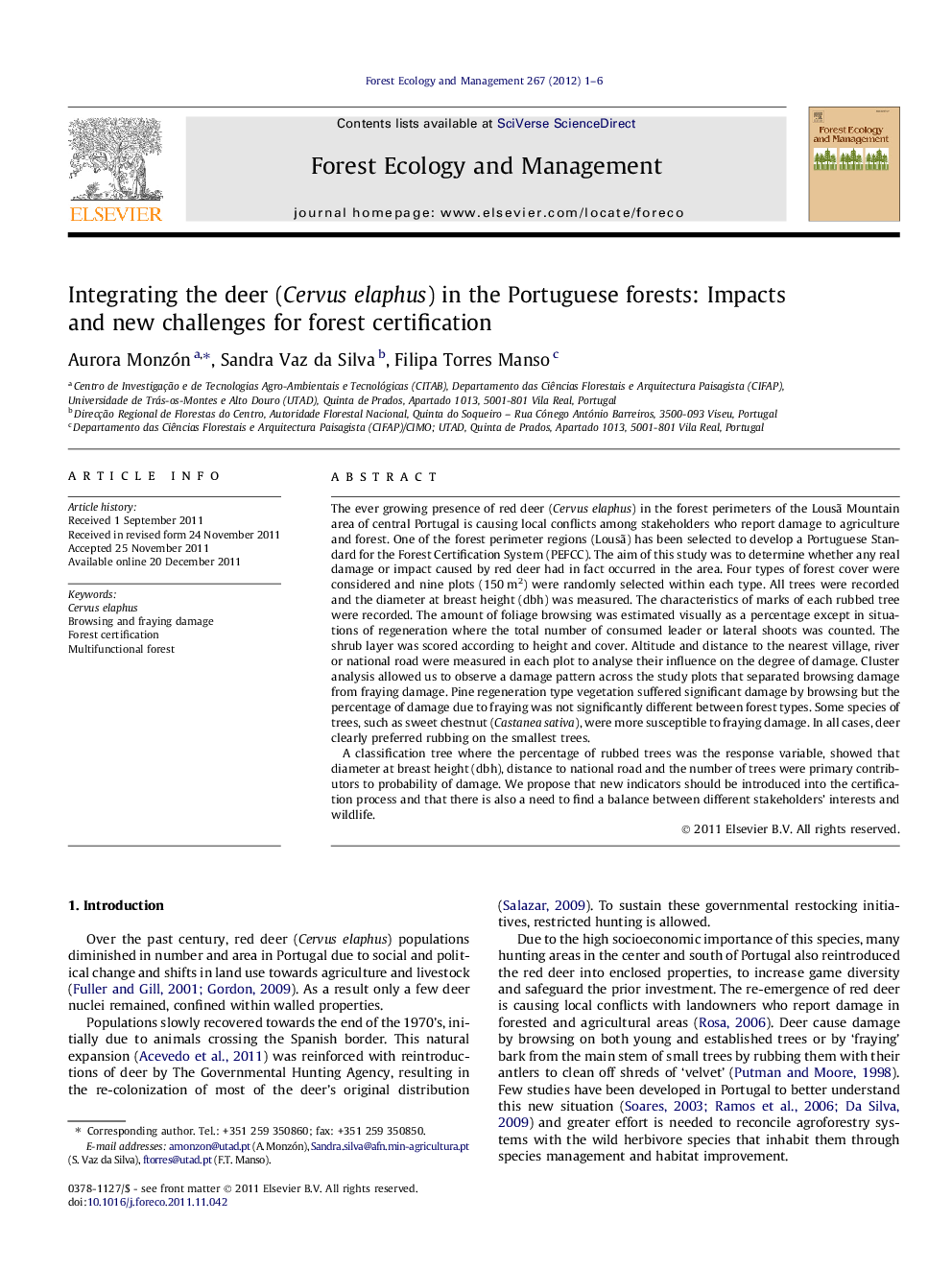| کد مقاله | کد نشریه | سال انتشار | مقاله انگلیسی | نسخه تمام متن |
|---|---|---|---|---|
| 87606 | 159258 | 2012 | 6 صفحه PDF | دانلود رایگان |

The ever growing presence of red deer (Cervus elaphus) in the forest perimeters of the Lousã Mountain area of central Portugal is causing local conflicts among stakeholders who report damage to agriculture and forest. One of the forest perimeter regions (Lousã) has been selected to develop a Portuguese Standard for the Forest Certification System (PEFCC). The aim of this study was to determine whether any real damage or impact caused by red deer had in fact occurred in the area. Four types of forest cover were considered and nine plots (150 m2) were randomly selected within each type. All trees were recorded and the diameter at breast height (dbh) was measured. The characteristics of marks of each rubbed tree were recorded. The amount of foliage browsing was estimated visually as a percentage except in situations of regeneration where the total number of consumed leader or lateral shoots was counted. The shrub layer was scored according to height and cover. Altitude and distance to the nearest village, river or national road were measured in each plot to analyse their influence on the degree of damage. Cluster analysis allowed us to observe a damage pattern across the study plots that separated browsing damage from fraying damage. Pine regeneration type vegetation suffered significant damage by browsing but the percentage of damage due to fraying was not significantly different between forest types. Some species of trees, such as sweet chestnut (Castanea sativa), were more susceptible to fraying damage. In all cases, deer clearly preferred rubbing on the smallest trees.A classification tree where the percentage of rubbed trees was the response variable, showed that diameter at breast height (dbh), distance to national road and the number of trees were primary contributors to probability of damage. We propose that new indicators should be introduced into the certification process and that there is also a need to find a balance between different stakeholders’ interests and wildlife.
► Damage in the forest was observed despite the low density of deer.
► Regeneration stand was the most affected by browsing.
► Tranquility, dbh and scrub determine the level of fraying damage.
► Damage monitoring should be included in forest certification.
► Diversifying forest products should involve all stakeholders in the process.
Journal: Forest Ecology and Management - Volume 267, 1 March 2012, Pages 1–6